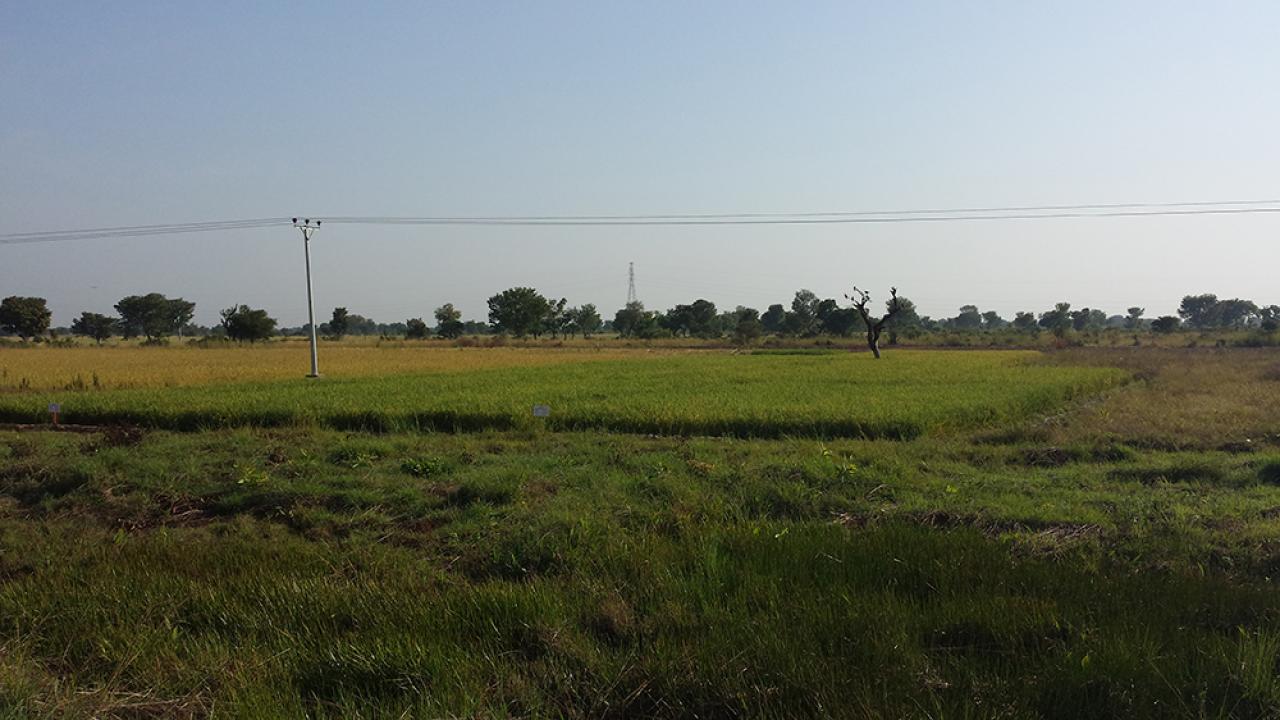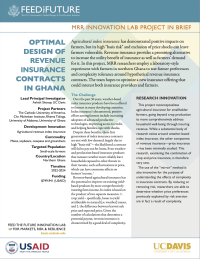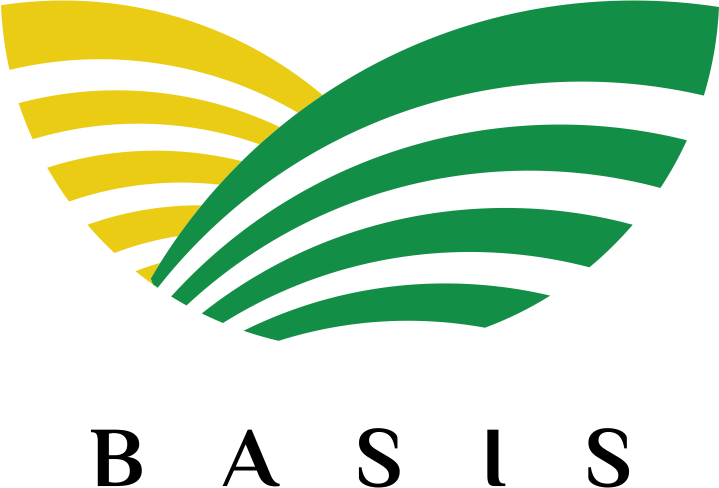
Agricultural index insurance has demonstrated positive impacts on farmers, but its high "basis risk" and exclusion of price shocks can leave farmers vulnerable. Revenue insurance provides a promising alternative to increase the utility benefit of insurance as well as farmers' demand for it. In this project, MRR researchers employ a laboratory-style experiment with farmers in northern Ghana to test farmer preferences and complexity tolerance around hypothetical revenue insurance contracts. The team hopes to optimize a new insurance offering that could interest both insurance providers and farmers.
Project overview
Lead Principal Investigator: Ashish Shenoy, UC Davis
Project Partners: The Catholic University of America, Chr. Michelsen Institute, Rhema Tidings, University of Alabama, University of Ghana
Development Innovation: Agricultural revenue index insurance
Commodity: Maize, soybeans, cowpeas and groundnuts
Targeted Population: Small-scale farmers
Country/Location: Northern Ghana
Timeline: 2022-2025
Funding: $239,608 (USAID)
The Challenge
Over the past 30 years, weather-based index insurance products have been offered to farmers in many developing countries. Index insurance’s documented, positive effects among farmers include increasing adoption of advanced productive technologies, improving access to credit, and helping families cope with shocks.
Despite these benefits, these first generations of index insurance contracts are met with low demand, largely due to high “basis risk”—the likelihood a contract will fail to pay out for losses. Even weather- and production-based insurance products that measure weather more reliably leave households exposed to other threats to their income, such as fluctuations in price, which can have enormous effects on farmers’ income.[1]
Revenue-based agricultural insurance has the potential to improve on existing yield-based products by more comprehensively insuring farm income. Its index is based on the product of two separate measures: 1. crop yield – specifically, losses to yield attributable to natural (i.e. weather) causes, and 2. the difference between harvest sale price and expected price. Given the number of calculations that determine a potential payout, revenue insurance is characterized by a good deal of complexity.
Research Design
The project is designing a revenue insurance index that tracks farm household income more closely than weather indices alone. The team will implement a laboratory-style experiment among 1,000 Northern Ghanaian farmers that uses hypothetical agricultural insurance choices to identify the features of a revenue insurance contract that will generate greatest demand and maximize utility for policyholders.
“Utility” is defined as the extent to which actual losses due to natural causes and changes in market price are covered. Around “Demand,” this study focuses specifically on the issue of complexity. Recent research has shown that the complexity of insurance contracts reduces demand, regardless of the product’s expected utility.[2]

First, the researchers will present participants with a series of insurance decisions on a hypothetical farm, amid uncertainty in harvest quantity and the sale price. In each decision, farmers will be offered an insurance contract at a price above the actuarially fair price, based on an index of yield and/or revenue. Participants’ decisions on whether to purchase the contract will reveal insurance demand, a function of factors including both utility maximization and complexity.
Next, the researchers will separate utility from complexity by presenting participants with two alternate hypothetical offers. First, the researchers will present a “window” choice, in which the contract terms are identical but the language is re-written to be simpler. Differences in participants’ decision to purchase the contract at the same price will provide a helpful estimate of farmers’ perceived “utility benefit” of the insurance offering.
The researchers will also present a “mirror” choice,[3] in which the risk around payout amount is removed. Farmers will face the same uncertainty over yield and price realizations, but will be guaranteed to receive a payout equal to the average of all the possible index outcomes. Because the mirror decision removes the risk, participants’ willingness to purchase insurance above the actuarially fair price here can be attributed to complexity. Finally, the team will combine the resulting estimates of the relative importance of risk and complexity with historical data on variation in prices and yields to design the optimal contract.
Development Impact
By introducing an insurance index product that is more responsive to farm household revenue, the project aims to promote greater uptake and increase welfare. The team expects to produce two optimal revenue insurance contracts for uptake in Ghana’s insurance market: the first, a contract to be made directly with farmers at planting; the other would be sold to intermediaries who bundle insurance with agricultural input loans. The ultimate development impact aim of this project is that small scale farmers access insurance that protects their household well-being against shocks in weather and prices.
Ghana is a Feed the Future target country, and this project takes place in districts in the Northern, North East, Upper West, and Upper East regions, where Feed the Future focuses its work. Participants farm crops in value chains that are targeted by Feed the Future in Ghana. If the project is successful in introducing new insurance products to the market that better meet farmers’ demand and welfare needs, farmers in Feed the Future projects may benefit.
[1] Aditto, S., Gan, C., & Nartea, G.V. 2012. “Sources of risk and risk management strategies: The case of smallholder farmers in a developing economy.” Risk Management – Current Issues and Challenges.
[2] Elabed, G. and Carter, M.R. 2015. “Compound-risk aversion, ambiguity and the willingness to pay for microinsurance,” Journal of Economic Behavior & Organization.
[3] Oprea, R. 2023. “Simplicity Equivalents.” Unpublished manuscript.
This report is made possible by the generous support of the American people through the United States Agency for International Development (USAID) cooperative agreement 7200AA19LE00004. The contents are the responsibility of the Feed the Future Innovation Lab for Markets, Risk and Resilience and do not necessarily reflect the views of USAID or the United States Government.
